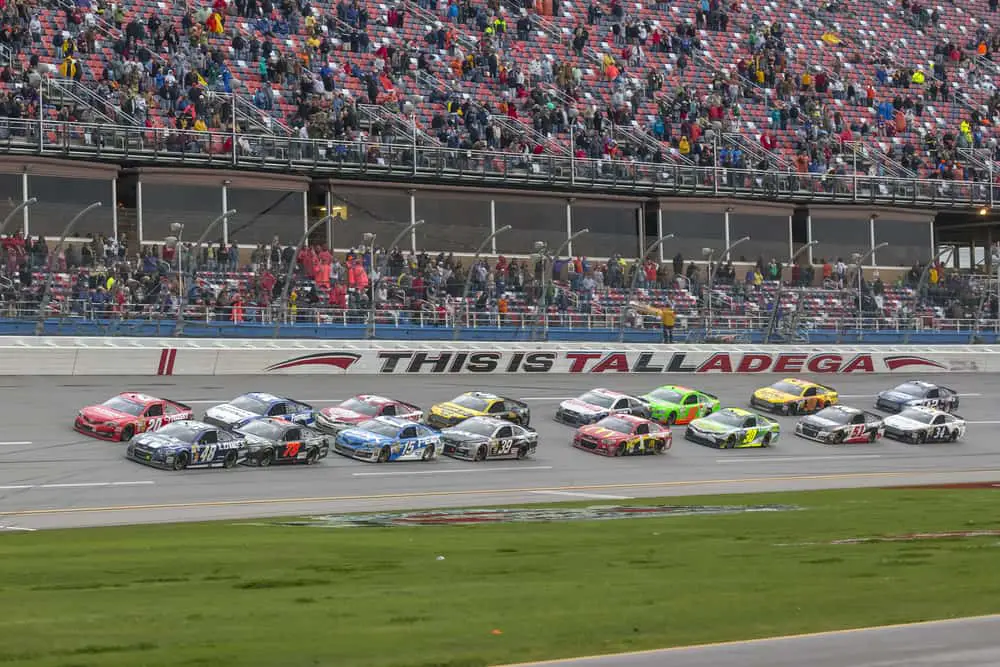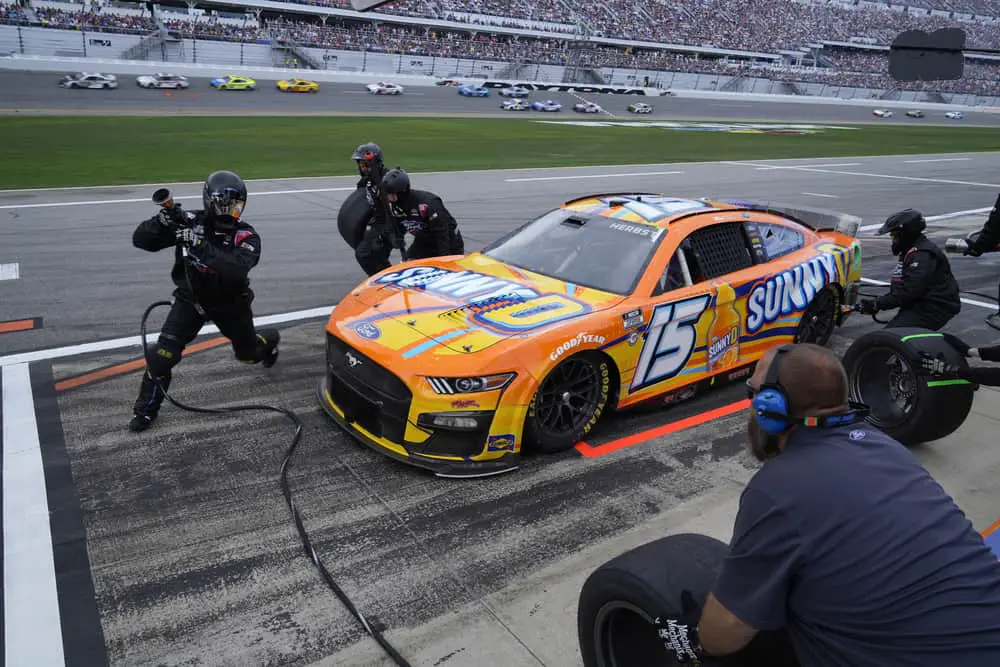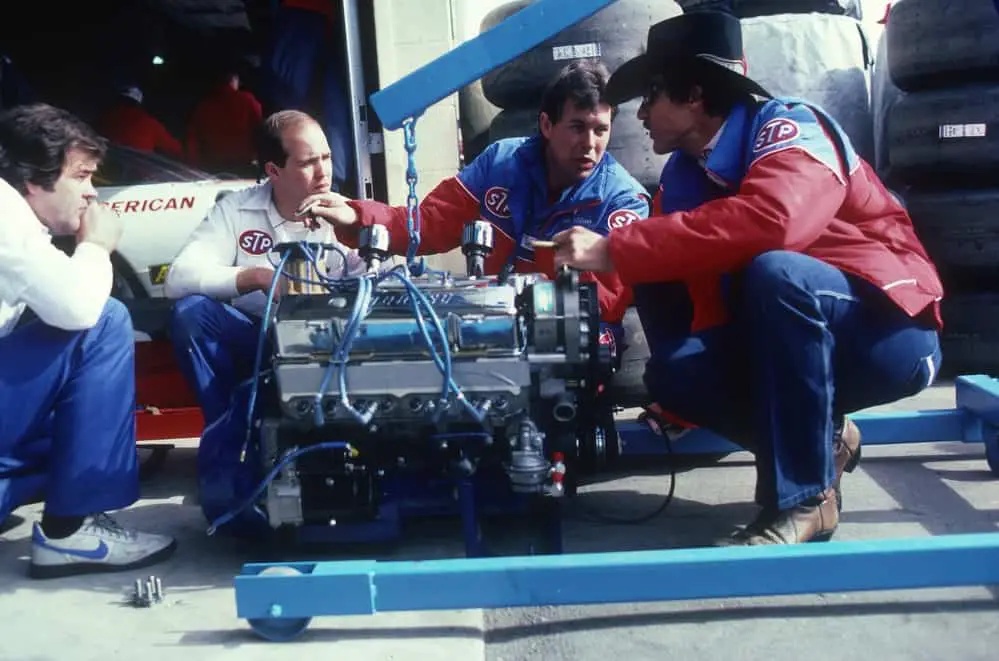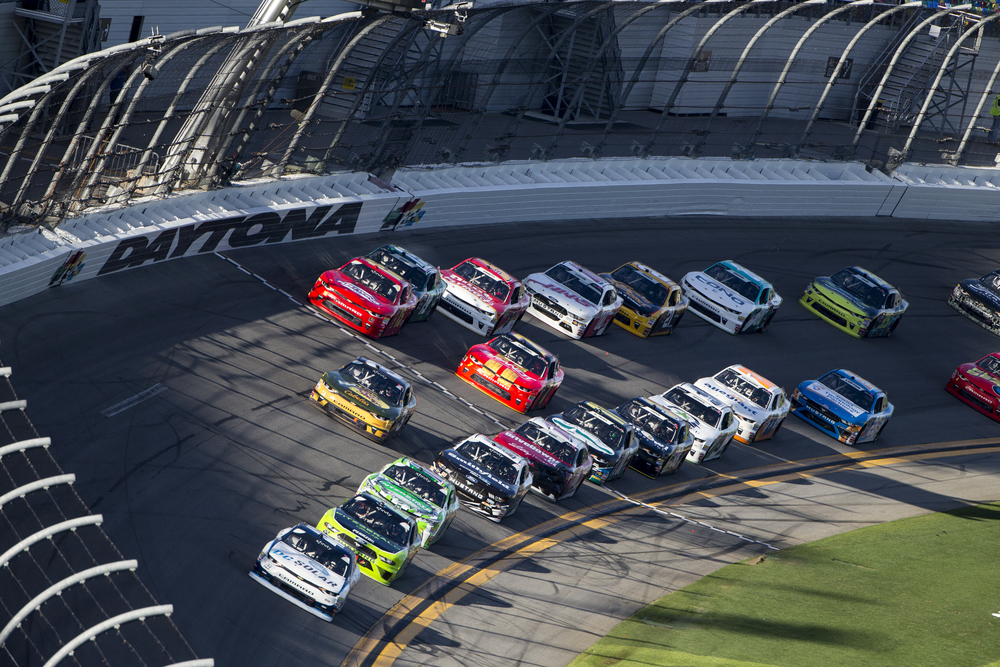NASCAR races are known for their high-speed thrills, exhilarating competition, and iconic stock cars. For many fans, one of the most fascinating aspects of the sport is the powerful engines propelling these race cars to incredible speeds.
A common question arises: do all NASCAR cars have the same engine?
The truth is that NASCAR regulations do require a certain level of standardization when it comes to engines. This is done to ensure a level playing field and maintain safety standards across the sport.
However, it is important to note that although the engines may have similarities, they are not entirely identical. Differences can emerge from various sources, such as the teams’ engineering expertise and the specific car manufacturers’ guidelines.
Delving deeper into NASCAR engines, we can discover the factors at play that contribute to their unique qualities. From the intricate engine designs to the skillful tuning by specialized teams, there is more beneath the hood than meets the eye.
This article will explore the world of NASCAR engines and shed light on their similarities and differences.
NASCAR Engine Basics
Current Engine Specifications
NASCAR engines have specific requirements to maintain a competitive and level playing field. The current engine specifications are:
- Engine type: V8 pushrod, 90-degree
- Displacement: 358 cubic inches (5.86L)
- Power output: 550 to 750 horsepower, depending on the track and the use of a tapered spacer
- Maximum RPM: 9,000
Engine Components
A brief overview of the essential components of a NASCAR engine is as follows:
Engine Block
The engine block is the foundation of any engine. In NASCAR, teams use cast iron blocks with a compacted graphite iron (CGI) cylinder liner for added durability.
Cubic Inches
Displacement, or the total volume of all the cylinders in an engine, is measured in cubic inches for NASCAR engines. A larger displacement allows for more air and fuel mixture to be burned, generating more power.
Power Output
The specific power output of a NASCAR engine depends on the track configuration and the use of a tapered spacer. The tapered spacer limits airflow to the engine, reducing power output on certain tracks for safety reasons.
Depending on these factors, engines can produce anywhere from 550 to 750 horsepower.
Race Engines
NASCAR race engines must be highly reliable, efficient, and able to withstand extreme conditions. To achieve this, they feature high-strength and lightweight components, like titanium valves and composite materials.
Tapered Spacer
A tapered spacer is a device that sits between the carburetor or throttle body and the intake manifold. Its purpose is to limit the airflow into the engine, which in turn reduces power output. NASCAR introduced tapered spacers to enhance safety on certain tracks by lowering speeds.
Size
The overall size of a NASCAR engine is compact, given its significant power output. The V8 configuration, with its 90-degree angle, provides a more balanced and compact design compared to other engine types, which allows it to fit within the tightly regulated space of a race car chassis.
Engine Rules and Regulations
NASCAR Rule Book
The NASCAR Rule Book is established and regularly updated by the sanctioning body to ensure a level playing field and promote fair competition among teams. This guide outlines specifics pertaining to engine rules, regulations, and any potential updates to adapt to technology advancements.
Engine Component Restrictions
NASCAR dictates strict rules regarding engine components. It is mandatory for all teams to adhere to these guidelines. Some essential engine component restrictions are:
- Restrictor Plates: These plates limit airflow to the engine, reducing horsepower and overall vehicle speed. NASCAR implements restrictor plates at select superspeedways to enhance driver safety.
- Engine Displacement: To maintain a standard engine size, NASCAR requires all teams to use engines with a maximum displacement of 358 cubic inches (5.8 liters).
- Cylinder Block and Heads: Teams must use only approved cylinder blocks and heads provided by authorized manufacturers. This ensures a uniform platform across all competing vehicles.
- Fuel Injection: NASCAR mandates using the Electronic Fuel Injection (EFI) system, which controls air-fuel mixtures and supports optimal combustion efficiency.
Penalties and Violations
Strict penalties apply to teams that break any engine component rules. Penalties for violations include:
- Loss of driver and team owner points
- Monetary fines
- Suspension of crew members
- Disqualification of race finishes
Adherence to engine rules and regulations is essential for teams to stay competitive in NASCAR. These policies maintain a balance in competition and ensure that drivers’ performances are the ultimate determinants of success on the track.
Engine Manufacturers and Suppliers
Roush Yates Engines
Roush Yates Engines is a leading engine manufacturer and supplier in the NASCAR racing scene. They are known for their high-quality engines and performance on the track. Many race teams rely on their engines in stock car racing.
Teams that use Roush Yates Engines include some of the top contenders in the NASCAR Cup Series, such as Team Penske and Stewart-Haas Racing. These race teams have experienced significant success and numerous wins with the support and power of Roush Yates Engines under their hoods.
Roush Yates Engines pride itself on:
- Engine design: Continuous improvement and innovation drive their engine designs to be powerful, efficient, and reliable.
- Manufacturing: Their advanced manufacturing facilities produce engines with precision and quality control at every stage.
- Support: Providing professional technical support to ensure optimal performance for all clients.
It is essential to note that while Roush Yates Engines is a dominant player in the NASCAR engine manufacturing scene, not all NASCAR race cars use their engines.
Multiple manufacturers and suppliers cater to teams in the NASCAR racing community. This variety allows for increased competition and innovation amongst engine providers, ultimately benefiting the sport as a whole.
Engine Performance Factors
Speeds and Power Output
In NASCAR, engine performance is a critical aspect of racing. Several factors contribute to an engine’s speed and power output, including:
- Engine design and specifications
- Aerodynamics of the vehicle
- Tuning and optimization by race teams
These factors help determine the overall speed and power of a NASCAR engine and ultimately affect on-track performance.
Tracks Influence
Track design and surface play a significant role in engine performance. NASCAR races occur on various types of tracks, ranging from short tracks to oval tracks and superspeedways. The engine performs differently based on the track:
- Oval tracks: Vehicles on oval tracks typically require more sustained power as they maintain higher speeds for more extended periods.
- Road courses: Engines on road courses need a different power distribution due to the turning and braking requirements of these tracks.
Race teams often make specific adjustments and optimizations to their engines depending on the upcoming track in the racing schedule.
Fuel and Oil Systems
Fuel and oil systems are essential for engine performance since they ensure the proper functioning of various engine components. Key elements in these systems include:
- Fuel pump: Supplies fuel to the engine at the required pressure
- Fuel injectors: Sprays fuel into the combustion chamber in precise amounts
- Oil pump: Circulates oil throughout the engine for lubrication and cooling purposes
Maintaining these systems helps maximize engine performance and maintain consistent power output for the duration of a NASCAR race.
Engine Variations in NASCAR Series
Short-Track Cars
Short-track cars are designed specifically for smaller tracks, with a focus on handling and acceleration. These vehicles typically have a shorter wheelbase, which allows for better cornering and quicker response to driver input. The engines in short-track cars are usually smaller than those used in the larger oval-track cars, but they provide sufficient power for the demands of short-track racing.
Some key features of short-track car engines include:
- Smaller displacement for quicker response
- Higher compression ratio for increased power
- Specially designed camshafts for optimized valve timing
Turbocharged Engines
Turbocharged engines are a less common choice in NASCAR series, but they can provide significant power gains when used effectively. By forcing more air into the combustion chamber, turbochargers allow the engine to burn more fuel, thus producing more power.
However, these engines can be more challenging to maintain and are usually reserved for specific racing conditions.
Advantages of turbocharged engines:
- Increased power output for a given engine size
- Improved fuel efficiency under certain conditions
- Potential for higher top speeds on longer tracks
Some potential drawbacks of using a turbocharged engine include:
- Increased engine complexity and maintenance costs
- Greater potential for heat-related issues and failures
- Possible lag in power delivery due to turbocharger spool-up time
Safety Measures
Crash Impact Protections
In NASCAR, safety is paramount, and multiple measures are in place to protect drivers if a crash occurs. One of these measures is the implementation of energy-absorbing materials in crucial areas of the race cars, such as door panels and front-end structure. These materials help dissipate the force of impact, reducing the risk of injury to the driver.
Additionally, NASCAR vehicles are equipped with state-of-the-art restraint systems to minimize movement during an impact. Drivers wear head and neck restraint devices, along with a securely fastened five-point harness, to ensure they stay safely inside the seat when collisions happen.
Intake Manifold Design
The intake manifold is a critical component of a NASCAR race car’s engine, responsible for evenly distributing the air-fuel mixture to each cylinder for combustion. The design of the intake manifold plays a vital role in having a smoothly operating engine and improving overall safety as well.
In NASCAR, intake manifolds are meticulously crafted to reduce the risk of air leakage or uneven fuel distribution, which can lead to catastrophic engine failures during a race. Ensuring an efficient and secure design reduces the chances of engine-related incidents and protects drivers from potential dangers.
Future Developments in NASCAR Engines
As NASCAR continues to evolve, future developments in engine technology are expected to play a major role in shaping the sport. Manufacturers are continuously striving to improve performance while maintaining a competitive balance between teams.
In recent years, NASCAR has focused on improving the sustainability and efficiency of its engines. One area of interest is the potential shift to hybrid or electric engines. Although still in its infancy, this development could revolutionize the racing industry and provide new challenges for drivers, teams, and manufacturers alike.
Another key area of focus is aerodynamic improvements to the bodies of racecars. Manufacturers are constantly working on fine-tuning the designs, with the aim of reducing drag and improving performance on the track. In addition, advancements in materials are expected to further enhance the bodies, making them lighter and more durable.
Regarding powertrains, there is ongoing research to explore alternative fuel sources, such as hydrogen or biofuels. These options could reduce NASCAR’s carbon footprint while offering an exciting new dimension to the sport.
In order to maintain the core appeal of NASCAR, the competitive nature of the sport must always be preserved. Therefore, engine regulations will continue to be updated to account for new technology advancements, ensuring that no single manufacturer gains an unfair advantage over others.
Overall, future developments in NASCAR engines will likely focus on sustainability, efficiency, and materials while preserving the competitive balance that makes the sport so exciting for fans and drivers alike. The ever-evolving world of motorsports ensures that NASCAR will continue to push boundaries and innovate as the sport moves forward.




